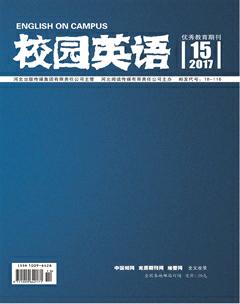An Evaluation of Project English Textbooks for Junior High Schools
石文霞
1. Introduction
This paper choose Project English Textbooks to evaluate and give some advice to makes a contribution to the improvements of English teaching.
Project English textbooks (Renai English textbooks) are used most widely in our country. However, the researches about Project English textbooks are less. So this paper chooses Project English textbooks to evaluate and explore some problems in teaching and learning process. Project English textbooks were compiled based on constructivist teaching theory and proper view of language. Communication language teaching approach and task-based language teaching approach are mainly adopted.
2. Theories of English language teaching materials evaluation
Textbook evaluation is a process to examine and make subjective judgements of the value of a set of textbooks in order to make them fit the requirements of learners.
Cunningsworth (1995: 3) provides a manageable list of the most important criteria as a basic quick-reference checklist for evaluation. At the same time, Cunningsworth (1995: 15-17) points out four guidelines for evaluation underline many of the most specific criteria for evaluation.
The criteria they propose have mostly been checklist-based or question-based to determine the extent to which the materials fulfill a set of criteria.
3. The Evaluation of Project English Textbooks for Grade Eight
Based on the criteria discussed in previous chapter, this paper evaluates Project English textbook for Grade Eight.
In the textbook, the four skills, listening, speaking, reading and writing are all included. And all of this skills are integrated and activities are presented in realistic contexts.
3.1 Listening skills
From Tomlisons Media-specific criteria (1992): those which relate to the practical medium used, for example, the quality of recording of audio-recorded material, analyzing the coursebook. First, the quality of the recorded sound is in a high-quality and the speed of speaking is appropriate for learners. Also there is some music before listening which is helpful to relieve students listening anxiety.
3.2 Speaking skills
Cunningsworths (1995) checklist for speaking skills suggests that the materials for speaking may include oral presentation and practice of language items, dialogues, role play and communication.In addition, the speaking practice takes place through practice of new language items, dialogue work, pair work and group work. These communication activities can improve students speaking skills and increase students self-confidence.
3.3 Reading skills
In reading text, the new language items, grammar and vocabulary, are introduced. Meanwhile, the textbook also focuses on the development of reading skills and strategies, which are keep with Cunningsworths (1995) criteria for reading skills. By reading the passage and complete the tasks under the teachers guiding, students learn the reading skills.
3.4 Writing skills
Writing activities are mainly in section c and d. In section c, the writing activities are usually controlled practice, for example, the requirements of writing down the summary of a passage or writing down the main idea of a passage. In section d, the writing practice is usually are semi-free writing practice, which ask students to write something according to the requirements or given information. In this textbook, in every topic, the writing task in section d is about the previous discussed topic that can help students to understand the topic further and express their own ideas.
4. Conclusion
After evaluation of the textbooks, this paper find some strengths of the textbooks, and also find some weaknesses. Generally speaking, Project English textbooks can meet the students and teachers needs and are a set of high-quality textbooks. All tasks are designed for the benefit of students. However, there are also some weaknesses.
References:
[1]Cunningsworth,A.(1995).Choosing your Coursebook.U.K.: Heinemann.
[2]Eills,R.(1997).The empirical evaluation of language teaching materials.Language Teaching Journal,51(1):36-42.
[3]Grant,N.(1987).Making the most of Your Textbook.New York: Longman.
[4]Hutchinson,T&Waters A.(1987).English for Specific:A Learning-centred Approach.Cambridge:Cambridge University Press.
[5]Tomlison,B.(1998).Materials Development in Language Teaching.Cambridge:Cambridge University Press.

